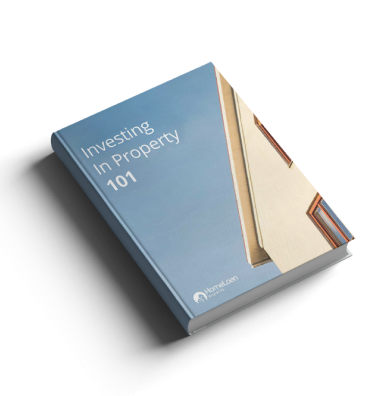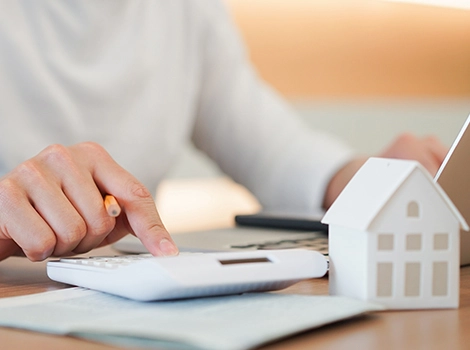Use the investment property calculator to accurately predict the weekly cashflow position of your next investment property.
How To Use This Calculator
Simply enter the details of the investment property you want to purchase and your income, and our calculator will work out the rest for you.
- Step 1: Enter the details of the purchase, including the property price and your deposit.
- Step 2: Enter your income and the expected rental income.
- Step 3: Enter the costs associated with the property (our calculator will estimate some of them for you).
Please speak to one of our expert mortgage brokers today by calling 1300 889 743 or by filling in our free online assessment form to find out how we can help you with an investment loan.
What Is Cashflow In Investment Property?
Cashflow in investment property refers to the money left over after paying all property-related expenses, including mortgage repayments, maintenance, council rates, insurance, and property management fees. Essentially, it’s the difference between your rental income and costs.
Each investment property should be viewed as a mini-business with its own income and expenses. Depending on the balance, you’ll either make a profit or a loss each week.
Positive cashflow occurs when your rental income exceeds your expenses, providing you with a profit.
Negative cashflow happens when your expenses surpass your rental income, requiring you to contribute funds to cover the shortfall.
Most properties start with negative cashflow, especially when first purchased. As the loan gets repaid and rents increase over time, however, they often become positively geared, meaning they generate positive cashflow. Some properties, especially in mining towns, remote areas, or unit blocks, may even have positive cashflow from the moment of purchase. Some strategies, such as taking short-term rentals through platforms such as Airbnb, can sometimes make achieving positive cashflow easier.
Negative gearing can be a beneficial strategy for investors with high taxable incomes, particularly those in the top tax brackets, provided the property has strong capital growth potential.
Understanding and managing cashflow is critical for ensuring your investment property remains financially viable, regardless of whether you aim for short-term profit or long-term growth.
Calculating Property Expenses
Our investment property cashflow calculator will automatically estimate many of the expenses associated with your property.
| Expenses Considered | Expenses Not Considered |
|---|---|
| Council rates | Gardening |
| Water rates | Landlords insurance |
| Building insurance | Contents insurance |
| Property management fees | Renovations |
| Maintenance | Bank fees (for example, annual package fee) |
| Home loan repayments | Changes in interest rates |
Purchasing costs, such as legal fees, Lenders Mortgage Insurance (LMI) and stamp duty |
You may qualify for an LMI discount, so complete our free online assessment form to find out more.
How Much Deposit Do I Need For An Investment Property In Australia?
In Australia, a 20% deposit is typically required for an investment property loan that allows you to avoid Lenders Mortgage Insurance. Some lenders may accept a lower deposit if you have a strong credit score and stable income. You can also borrow up to 95% of the property’s value with at least 5% in genuine savings, though this would require paying LMI.
How Much Tax Is Paid On Rental Income?
In Australia, rental income is considered taxable income and must be declared in your annual income tax return. The tax you pay on rental income depends on your overall taxable income and your marginal tax rate, as set by the Australian Taxation Office (ATO).
| Taxable Income | Tax Rate |
|---|---|
| $0 – $18,200 | Nil |
| $18,201 – $45,000 | 16 cents for each $1 over $18,200 |
| $45,001 – $135,000 | $4288 plus 30 cents for each $1 over $45,000 |
| $135,001 – $190,000 | $31,288 plus 37 cents for each $1 over $135,000 |
| $190,001 and over | $51,638 plus 45 cents for each $1 over $190,000 |
Note: The above rates do not include the Medicare levy of 2%.
Deductions To Consider
- Management and maintenance costs
- Borrowing expenses (like loan interest, not principal)
- Depreciation on the property and its assets
You can reduce your taxable rental income by claiming various expenses, such as:
These deductions can lower your taxable income and the tax you owe.
Apply For An Investment Loan
Once you’ve experimented with the property investment calculator, we can help you qualify for an investment loan to buy a new property.
Speak to our mortgage brokers by calling 1300 889 743 or fill in our free assessment form to find out if you can qualify for a professional discount on your interest rate.
Property Investment Guide 101
Learn the ins & outs of investing in properties from an experienced property investor and founder of Home Loan Experts, Otto Dargan.

Frequently Asked Questions
Are Investment Loans Tax Deductible?
If you borrow money to purchase investment property, the interest paid on the loan is deductible, provided the investment generates rent. This deduction is specific to interest payments, not the principal repayments. Property investors often choose interest-only loans to maximise the impact of these deductions. Other tax-deductible expenses related to investment properties include advertising fees, repairs, utilities, legal fees, and insurance. Costs related to property purchase or sale and expenses paid by tenants are not deductible.
How Do You Calculate The Investment Value Of A Property In Australia?
How Is Capital Gains Tax Calculated On An Investment Property In Australia?
Still need answers? We're here to help!
Ask an expertOur team of mortgage experts will assist you within 24 hours.





